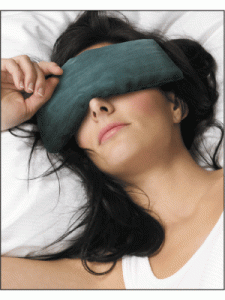Home remedies for migraine pain relief are some of the most sought after natural cures. For many of us, headaches top the list of common complaints, and migraines are by far the most painful and debilitating type of headache. An intense migraine attack can floor victims, plaguing them with nausea and vertigo (dizziness) and confining them to bed.
Although over-the-counter analgesics such as aspirin and ibuprofen work well to stop many types of headache pain, they’re relatively ineffective when it comes to migraines. Prescription drugs also don’t work well for many migraine sufferers, and most have the potential for causing unwanted side effects. For these migraine sufferers, home remedies for migraine headache pain relief may be their best option. One such natural remedy is feverfew, an herb used centuries ago for its pain-killing properties.
Home remedies for migraine headache pain relief, including feverfew, will be discussed further on the next page, but this article begins with some background on migraine headaches themselves.
Why Your Head Hurts
Doctors separate headaches into two categories: those that are caused by muscle contractions, and attacks brought on by vascular irregularities, such as expansion or contraction of blood vessels.
If your headache begins in the back of your neck and expands outward with a dull pain, you probably have a tension headache. Ninety percent of all headaches are thought to fall into this category. Tension headaches may be brought on by muscle contractions caused by poor posture, spinal misalignment, digestive problems, poor diet, or, most often, stress.
Vascular problems account for so-called cluster headaches. Cluster headaches are extremely painful. They are often concentrated around the eye and may produce tears, facial flushing, and nasal congestion. Men seem to get them more often than women do.
But women are more likely to experience migraines. Indeed, migraines strike three times as many women as men — and they can be debilitating. If you’ve ever had one, you may have been all but incapacitated by the pain and nausea that frequently accompany attacks.
How Migraine Headaches Work
Just about anything may precipitate a migraine attack: excessive caffeine, various foods or scents, dry winds, changes in altitude or seasons, hormonal fluctuations, taking birth control pills, missing a meal, or being in a stuffy room. Intense emotions, such as excitement or anger, also have brought on migraine attacks in some people. Even exercising, having sex, or eating very cold foods could lead to an episode.
In about 10 to 20 percent of migraine sufferers, the pain may be preceded by a visual warning. Such people may see a sort of “aura” that may include flickering points of light, blind spots, or zig-zagging lines. Rarely, migraine sufferers may also smell peculiar odors or notice that their limbs have become numb just prior to an attack. (It’s partly for this reason that some researchers think migraines are nerve-related, or neurological, in origin.) Most people who get migraines, however, are knocked for a loop with no warning at all.
A migraine headache usually starts with an intense, throbbing pain on one side of the head. Usually the pain begins to spread. And often, victims experience nausea and vomiting as well. Oversensitivity to stimuli is also a symptom of migraines. You may be especially aware of lights, odors, and sounds. This phenomenon probably occurs because blood vessels in your brain are overreacting by contracting and expanding abnormally.
Symptoms vary from person to person and may range in severity. A migraine headache may last a few hours, or it could make your life miserable for up to three days.
Why Migraines Happen
Why you get migraines is not clearly understood. Researchers have linked migraine symptoms to changes in the diameter of blood vessels in the head. At first, the vessels constrict. Then, as the pain begins, they dilate. What scientists don’t know is why these changes occur.
One theory is that they result from an imbalance in a mood-regulating brain chemical called serotonin. Hormones probably also play a role in the development of migraine headaches.
There also seems to be a strong connection between estrogen levels and migraines. That may explain why more women than men experience migraines and why attacks often seem to occur just before, during, or after a woman’s menstrual period. Migraine headaches, moreover, seem to run in families, spurring some researchers to speculate that victims have a “migraine gene” that predisposes them to attacks.
Fortunately for those who suffer migraine headaches, there are home remedies for migraine headache pain relief that can help. Shannon, who was quoted at the beginning of this article, may be a prime candidate for therapy using an herb called feverfew (Tanacetum parthenium).
Once used to treat a variety of conditions, including headaches and fever, feverfew has been “rediscovered” by migraine sufferers, who are using the herb to blunt the sometimes crippling pain that accompanies their sudden and ill-understood attacks.
Scientists now know that feverfew contains chemicals that may prevent migraines. And the best news is that feverfew has few side effects. Continue to the next page to learn more about feverfew and migraine pain relief.

